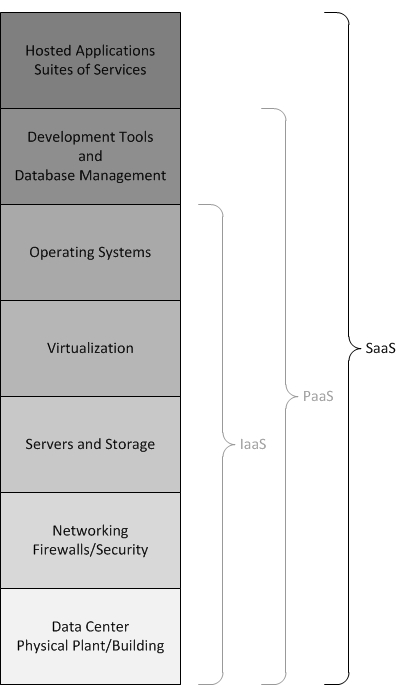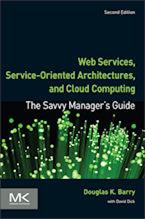Software as a Service (SaaS)
Software as a Service (SaaS) Discussion
Software as a Service (SaaS) is what most people mean when they say "the Cloud." SaaS provides a complete software solution. This software could be email management, calendaring, enterprise resouce planning (ERP), customer relationship management (CRM), documentation management, and so on. The easiest way to think about SaaS is that it is some type of standard software package that can be used on demand and is paid for by subscription, by use, by advertising, or by sharing information (such as email addresses) of users.
Most Application Program Interfaces (APIs) are associated with SaaS Cloud Providers.
Software as a Service (SaaS) Advantages
Advantages Unique to Software as a Service (SaaS)
- More than typical packaged software, using a SaaS provider will require you or your organization to use a "vanilla" version of the software. Minimal customization is typically offered. Sometimes being forced to use a "vanilla" version is helpful. (This can also be a disadvantage.)
Advantages Shared With Platform as a Service (PaaS) and Infrastructure as a Service (IaaS)
- Various pricing models may allow paying only for what you use. This, for example, can allow an individual or a small organization to use sophisticated software that they could not afford if it was installed on an internal, dedicated server.
- SaaS Cloud Providers often take into account multiple platforms: mobile, browser, and so on. If you or your organization want software that can be accessed from multiple platforms, this might be an easy way to make that happen. As part of this, SaaS Cloud Providers may also provide apps for mobile devices.
- If you have events such as high seasonal sales activity, then the elasticity of the Cloud with SaaS might provide an opportunity.
- The SaaS Cloud Provider may provide better security than your existing software (security—or inadequate security—can also be a disadvantage). Better security may come in part because it is critical for the SaaS Cloud Provider and is part of their main business. In-house security, on the other hand, is not usually an individual's or a organization's main business and, therefore, may not be as good as that offered by the SaaS Cloud Provider.
- No need to manage the introduction of new releases of the software. This is handled by the SaaS Cloud Provider.
- No need to provision servers. This is handled by the SaaS Cloud Provider.
- No need to manage the underlying data center. This is handled by the SaaS Cloud Provider.
- Usually, there is no need to manage backups. This is handled by the SaaS Cloud Provider.
- If the SaaS Cloud Provider supports failover should the software (for example, the database management software) or the data center become unavailable, that failover is a concern of the SaaS Cloud Provider and you do not need to plan for it.
Software as a Service (SaaS) Disadvantages
Disadvantages Unique to Software as a Service (SaaS)
- More than typical packaged software, using a SaaS Cloud Provider will require your or your organization to use a "vanilla" version of the software. Minimal customization is typically offered. (This is also an advantage.)
Advantages Shared With Platform as a Service (PaaS) and Infrastructure as a Service (IaaS)
- There may be legal reasons that preclude the use of off-premise or out-of-counry data storage.
- Security features of the SaaS Cloud Provider may not adequate for your needs.
- If you have a need for high-speed interaction between your internal software or software in another Cloud and the SaaS Cloud Provider, relying on an Internet connection may not provide the speed that you need.
Software as a Service (SaaS) Variations

Context for Software as a Service (SaaS)
Related Articles for Software as a Service (SaaS)
Author
Douglas K Barry
Principal
You may use this material for your work or classes. Reprint Policy. Be sure to check the menu at the left for other articles available on this site.
The Savvy Manager's Guide
Douglas K Barry is also the author of a book that explains Web Services, service-oriented architecture, and Cloud Computing in an easy-to-understand, non-technical manner.
Web Services, Service-Oriented Architectures, and Cloud Computing: The Savvy Manager's Guide (Second Edition)
by Douglas K Barry with David Dick
This is a guide for the savvy manager who wants to capitalize on the wave of change that is occurring with Web Services, service-oriented architecture, and—more recently—Cloud Computing. The changes wrought by these technologies will require both a basic grasp of the technologies and an effective way to deal with how these changes will affect the people who build and use the systems in our organizations. This book covers both issues. Managers at all levels of all organizations must be aware of both the changes that we are now seeing and ways to deal with issues created by those changes.

